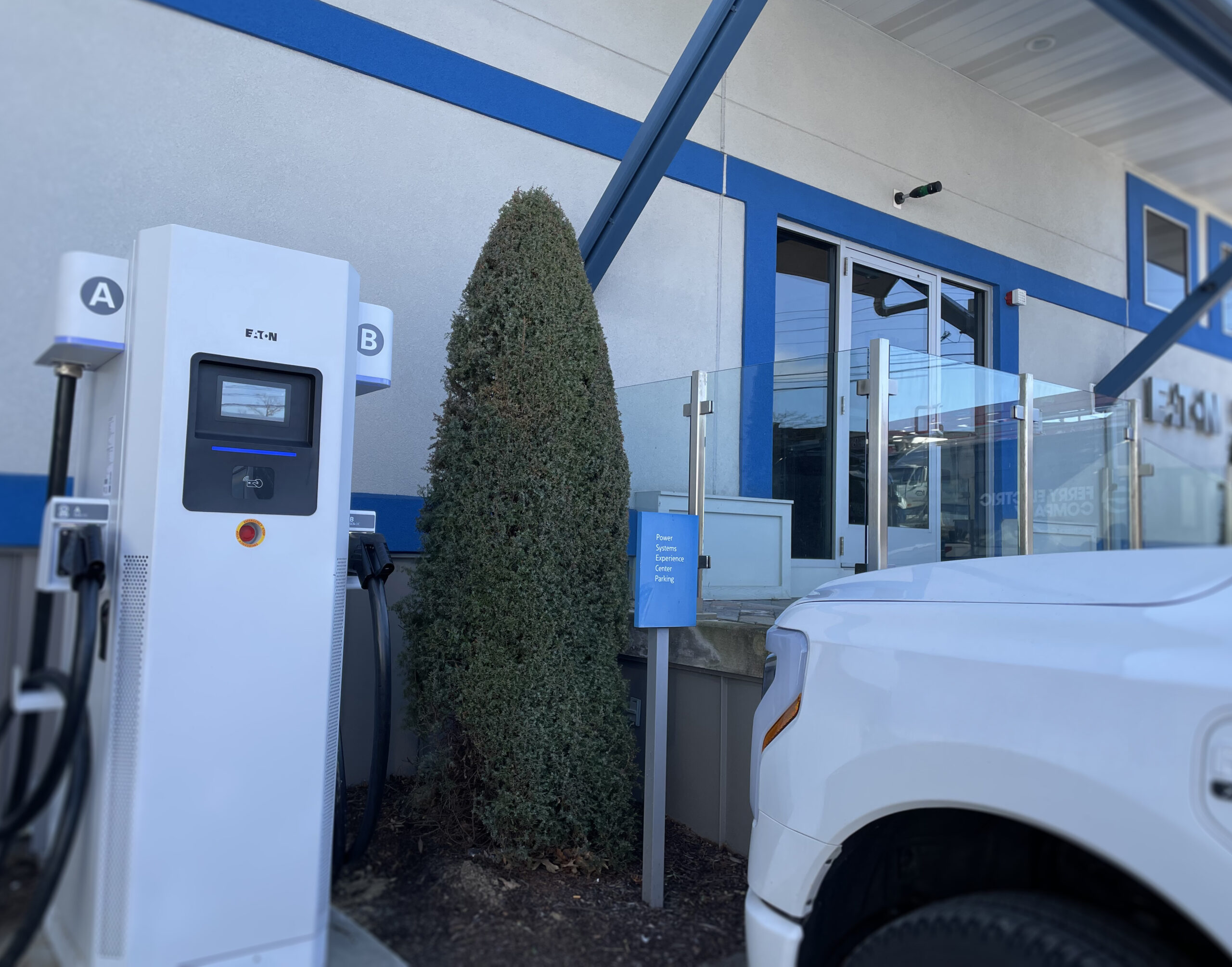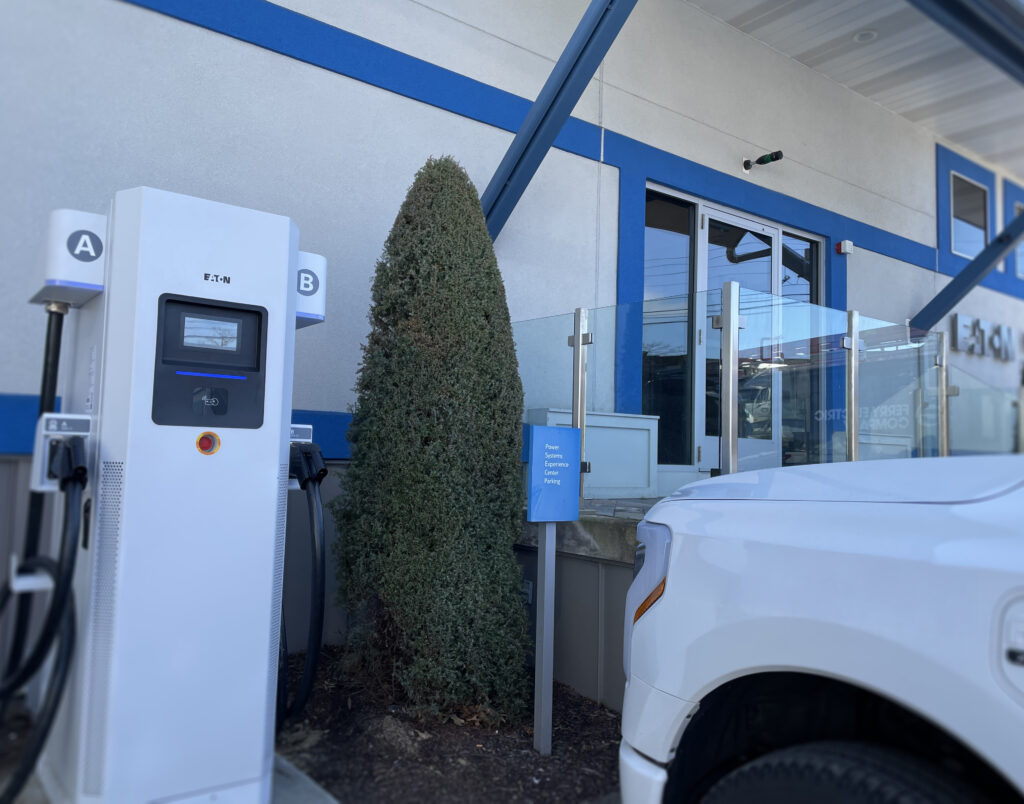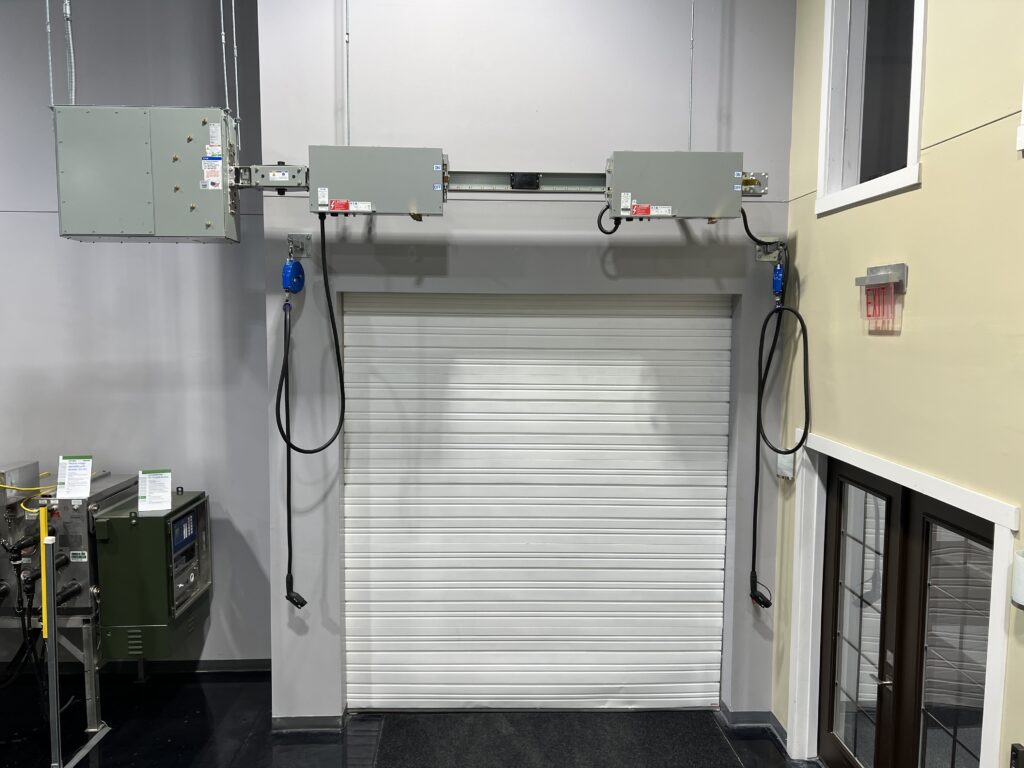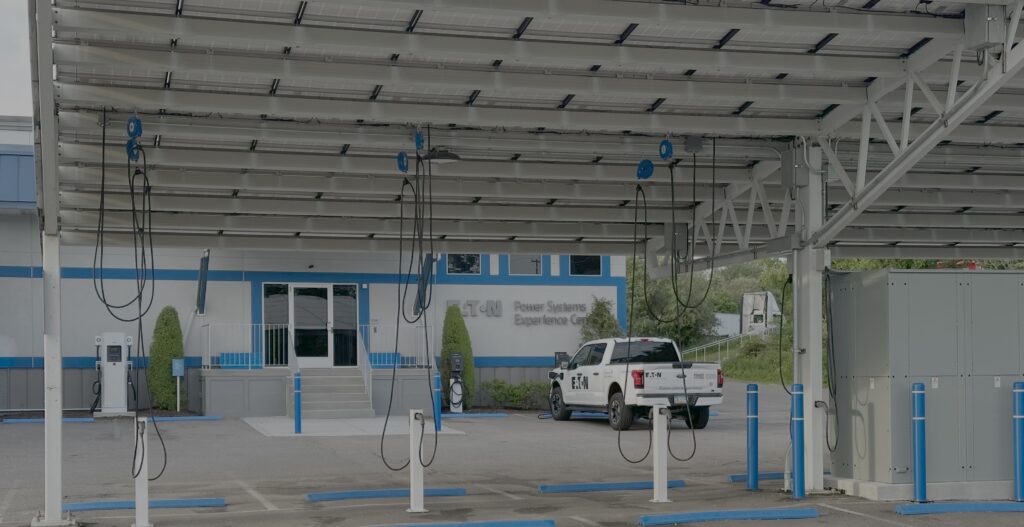Emphasize power system flexibility to safely meet the incremental energy demands of electrified industrial fleets.

EV Insights
- Electric vehicle (EV) adoption in industrial settings is growing, requiring well-designed EV charging infrastructure (EVCI) to support fleet operations while ensuring safety, scalability and cost efficiency.
- Effective EVCI planning involves assessing energy demand, optimizing power distribution, integrating smart load management and prioritizing cybersecurity to create a flexible and future-proof charging ecosystem.
Electric vehicles (EVs) are increasingly being adopted across industrial environments like warehouses and distribution centers to reduce emissions, fuel costs and maintenance requirements. Whether it’s fleet vehicles or electric forklifts, establishing safe and flexible charging infrastructure is essential to support an always-on, sustainable working environments.
However, implementing effective EV charging infrastructure (EVCI) involves much more than simply adding charging devices. It requires reimagining existing electrical systems to enhance flexibility and scalability — allowing industrial facilities to safely, cost-effectively and efficiently accommodate the growing energy demands of EV charging. This means optimizing power system design and selecting the right strategies to support increased energy loads while maintaining reliability and affordability.
The electrical infrastructure supporting industrial facilities must be able to adapt to change. To achieve this, electrical engineers designing EVCI systems must understand how the customer plans to use the charging stations and be well-versed in EV charging hardware options and software platforms. Here are the five critical considerations:
1. Understand how the EV charging system will be used
It’s essential to develop an EV charging strategy that takes into consideration all of an industrial facility’s needs. Conducting a feasibility analysis before planning EVCI deployment can provide insights into the capabilities of existing power systems to determine what’s needed to meet charging needs into the future.
The type of charger required depends on the typical distance driven per day and the size of the battery on fleet vehicles. For example, if fleet vehicles include sedans, pickup trucks and vans that are driven less than 200 miles per day and are plugged in at the end of each day, alternating current chargers should be adequate to provide a full charge overnight.
On the other hand, direct current fast chargers, which can charge most passenger EVs up to 80% within 15 to 45 minutes, are well-suited for around-the-clock or on-the-go operations but require higher electrical capacity due to increased power demand.
Fleet and plant managers must also determine how chargers will be accessed to meet the requirements of different vehicle types at different times of the day. Several configurations are available:
- EV charging can be connected directly from the breaker panel through a junction box with a charging cable at the parking location.
- A pivoting retractable cable reel mounted to the ceiling or wall keeps cables out of walking paths and parking stalls, enabling more spaces to be equipped for charging with the same number of chargers.
- Oversizing the panel allows for easy expansion of charging infrastructure later, making it simple to install additional chargers or add conduit and breakers for future needs.
- Busway, a common electrical distribution solution in industrial environments, can be used to integrate chargers directly into the bus plug, providing a scalable and future-proof footprint.

2. Use software to optimize EVCI functionality
A well-planned EV charging infrastructure should provide the flexibility to charge fleet vehicles as well as other vehicles that visit the site. Creating multiuse EV charging systems is complex, but software solutions can help streamline the process.
Fleet and plant managers can implement software that enables multiuse EV charging by differentiating between fleet and visitor usage. These platforms allow for different pricing structures based on user type. For instance, a driver can scan a QR Code or radio-frequency identification fob and the system will determine the appropriate pricing structure.
Additionally, software platforms help fleet managers:
- Organize, navigate and troubleshoot charging infrastructure easily.
- Add or modify charging stations as needed.
- Establish pricing policies based on flat rates, time, energy consumption or other criteria.
3. Stretch the capabilities of existing energy infrastructure
Many industrial facilities may lack the electrical capacity to safely accommodate new charging systems. Careful planning and system design are essential to maximize return on investment while minimizing costly site upgrades associated with pulling more power from the electric grid.
Load management technology plays a key role in optimizing EVCI. By implementing intelligent load management, more chargers can be installed while ensuring they deliver only the optimal amount of power required. When available capacity is reached, the software limits energy consumption to prevent overloads. This approach enables load shedding, avoiding the risk of exceeding incoming service capacity. If existing electrical capacity simply cannot meet expected demand, upgrading utility service will be necessary.
An alternative to utility service upgrades is investing in a microgrid EV charging ecosystem that incorporates an energy storage system and onsite renewable energy sources. This infrastructure investment can improve energy self-sufficiency and accelerate decarbonization goals. Battery energy storage systems make it possible to store off-peak energy from the grid or energy generated from onsite renewables, allowing the facility to switch to stored energy during peak utility rate periods — and even monetize excess energy when possible.
A complete load analysis should be performed before installing EV chargers of any voltage and thoroughly testing load shedding capabilities to ensure critical loads are not sacrificed when EV charging demand exceeds available panel capacity. The needs of the application should come first, keeping in mind that exceeding bare minimum NFPA 70: National Electrical Code requirements is often advisable.

4. Implement scalability for the future
When upgrading or designing building systems, conducting an EV charging feasibility analysis is crucial to planning for future EVCI capacity needs and avoiding significant costs later. Future-proofing electrical architecture ensures that new EV chargers can be easily added as required.
Scaling EV charging infrastructure over time can spread investment costs and allow businesses to transition to EVs at their own pace. Properly sizing electrical service and power distribution feeders to accommodate future growth is critical to avoid hidden costs. Load calculations must be performed to determine whether an existing panelboard can handle the additional load. If this step is skipped or done incorrectly, there is a high risk of charging station failures, damage to the electrical system and even injury.
To size EVCI for future growth, start by assessing current and projected EV demand, such as a 20% annual increase over five years. For example, if a building currently has 10 EVs, in five years, it may need to accommodate 25 EVs. If each charger has a calculated load of 7.2 kilovolt amperes (kVA) per space (or 3.3 kVA per space with energy management), the future total load for 25 chargers would be:
Without an energy management system and intelligent load management:
25 chargers x 7.2 kVA = 180 kVA
With an energy management system and intelligent load management:
25 chargers x 3.3 kVA = 82.5 kVA
To ensure scalability, the electrical panel should be sized accordingly, likely with a panel capacity of 200 kVA or more. Installing a dedicated subpanel, smart charging systems and conduits for future expansion will help manage growth.
Energy management systems enable dynamic load control, further enhancing scalability. If demand continues to rise, the system can easily support up to 50 chargers (360 kVA without energy management or 165 kVA with energy management). Integrating onsite renewable energy sources such as solar can further enhance capacity down the road.
5. Prioritize cybersecurity
Connectivity is essential for managing charging networks effectively. Charging stations must communicate securely with owners, operators and the grid to authorize charging, manage payments and regulate electrical loads.
Fleet managers, plant management teams and facility operators must ensure seamless integration between charging hardware and software while prioritizing cybersecurity. Charging solutions should comply with open charge point protocol and be developed using a secure development life cycle methodology. Cybersecurity must be incorporated at every level, including ports, communication modules and third-party controllers. Monitoring vulnerabilities and allowing only trusted firmware updates are critical measures to ensure security.
Establishing a robust cybersecurity program with periodic network assessments can help organizations stay ahead of potential threats, safeguarding both physical assets and operational data.

Flexibility is a priority for EVCI
The electric revolution is here. While many fleets are still in the early stages of EV adoption, building safe, secure and scalable infrastructure is crucial to supporting and accelerating the transition to electric transportation.
By implementing EVCI with safety and flexibility in mind, industrial organizations can avoid unnecessary costs and complications if systems need to scale in the future.
However, as EV adoption grows, best practices and technology for EVCI design will continue to evolve. Industrial facilities must remain adaptable and you can help ensure that their energy infrastructure is always optimized for what’s next.



